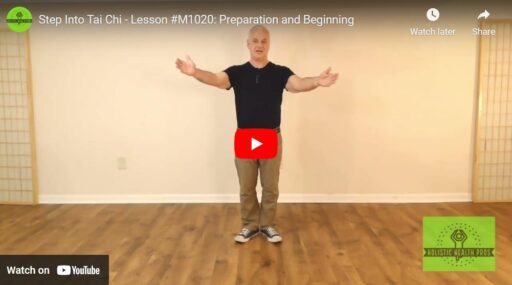Tai Chi and Qigong might conjure up images of flowing movements and deep focus—but here’s the twist: even the simplest, beginner-level version of these practices can spark real health improvements.
That’s exactly what happened in an experiment out of Brazil, where a basic Tai Chi and Qigong program has been integrated into a public healthcare clinic.
The results? Lower anxiety, less stress, and better overall well-being—all from just two hours a week of gentle, beginner-friendly movement.

📊 A Quick Look at the Study
- 🌍 Location: Brazil, inside a public health clinic
- 👥 Participants: 91 adults (ages 50–91) with diabetes, hypertension, or both
- 🧪 Setup:
- TCQ Group: 13 weeks of Tai Chi & Qigong
- Control Group: Routine medical care
- 🕒 Schedule: 2 × 1-hour classes/week + optional video-based home practice
- 📈 What They Measured:
- Anxiety (via STAI)
- Perceived Stress (via PSS-14)
The program was simple, accessible, and taught without advanced forms—and that was the point.
🧘 The Design of the Classes
This wasn’t high-level martial arts—it was a basic Tai Chi and Qigong program tailored for beginners, older adults, and those with mobility challenges. The focus was calm, breath, balance, and repetition.
Weekly Class Breakdown (60 minutes):
- Warm-Up (10 min)
- Joint circles
- Breath awareness
- Postural alignment
- Qigong (30 min)
Meditative, flowing movements like:
🧍♂️ Wu Chi Pose
🌳 Tree Hugging
☁️ Caressing Clouds
🪶 Crane Exercise
🪷 Buddha’s Hands
…and more.
- Tai Chi (10 min)
Basic Yang-style moves:
🐦 Grasp Sparrow’s Tail
✋ Raising Hands
🕊️ White Crane Spreads Its Wings
👣 Push, Defend, and Step Sequences

You can learn all these basic Tai Chi moves from our authorized
- Relaxation (5 min)
Standing meditation, soft breath focus
📱 Bonus: WhatsApp videos supported at-home practice
📉 The Results: What Really Changed?
🧠 Anxiety
- Down 6.4 points after 13 weeks
- Moved participants from moderate to mild levels
- Statistically significant
😰 Perceived Stress
- Down 4.8 points by week 6
- Down 9.3 points by week 13
🌙 Other Reported Benefits:
- More emotional calm
- Better sleep
- Increased social connection
- Less pain and better mobility
Even though blood pressure and glucose didn’t change significantly during the short study window, participants felt better—and that feeling matters.
🧑⚕️ Why This Matters – for Both Instructors and Students
This study sends a clear message:
💡 You don’t need advanced skills to benefit from Tai Chi or Qigong.
For Instructors:
- Simple, repetitive routines are effective
- Teaching in clinics and community settings is totally doable
- Tech like WhatsApp can extend your reach
For Beginners:
- No experience or flexibility needed
- Just two hours a week for 13 weeks can lower stress and anxiety
- Practicing in a group boosts motivation and mood
🧭 Real Healing, Real People, Real Simple
This wasn’t a polished retreat — it was a small public clinic helping people with serious health issues. And still, a basic Tai Chi and Qigong program made a real difference.
So, if you’re unsure where to start or feel like you’re “not good enough” to try Tai Chi…
💬 Remember:
You don’t need to be an expert.
You just need to start.
🌟 Gentle Moves. Serious Medicine.
Beginner-level Tai Chi and Qigong might look simple — but they’re powerful. This study proves that healing doesn’t require complexity. It requires consistency, breath, and presence.
So, whether you teach or practice, know this:
✨ Basic Tai Chi is more than enough.